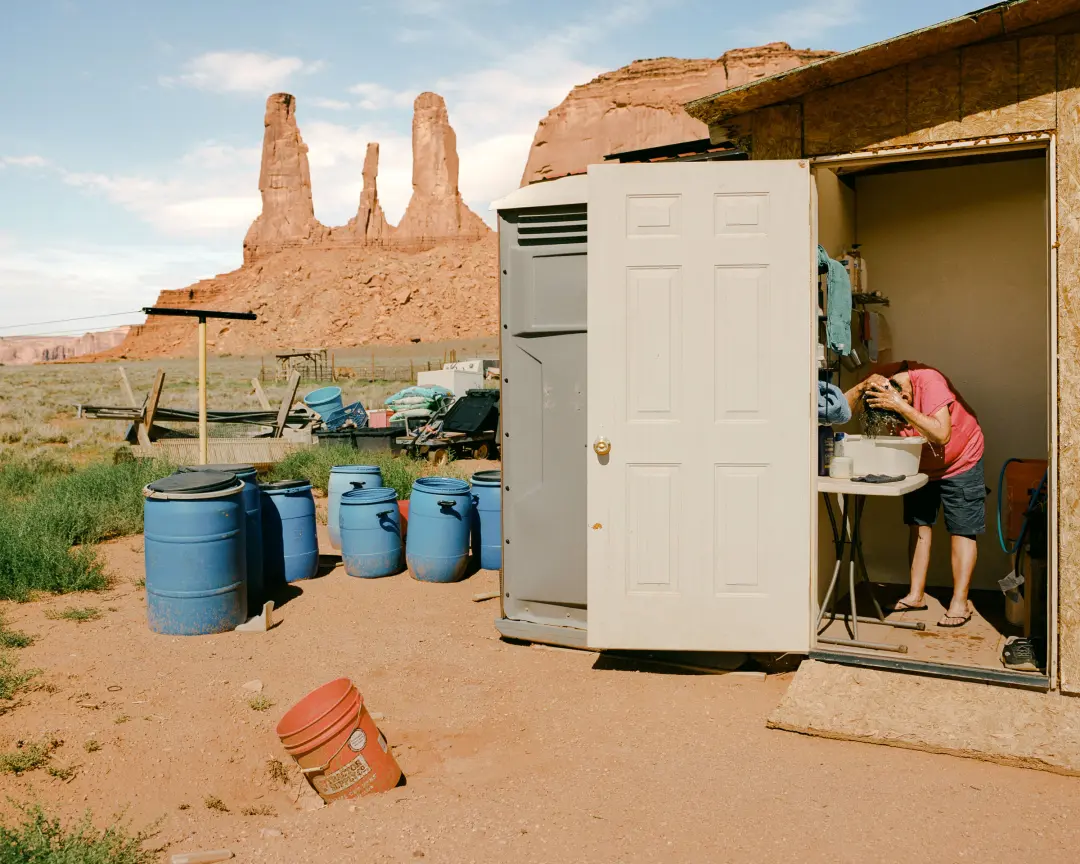
- Details
- By Levi Rickert
From the thousands of photographs it uses for publication annually, TIME Magazine each year curates its Top 100 Photos list. This year, TIME selected a photo of Linda Jackson (Diné), who lives in Monument Valley on the Navajo Nation.
Jackson’s photo was among those featured in TIME’s September 24 article highlighting the lack of running water on the country’s largest Indian reservation, which is geographically the size of West Virginia.
On the Navajo Nation, one in three Navajo–or Diné–residents must haul water to their homes, a resource everyone knows is essential to life.
“The Diné use the least amount of water per person of anyone in the U.S., and pay the most,” TIME writes in the article.
The average American uses 16 gallons of water to bathe each day. For Jackson, a full shower requires only 2½ gallons, so in the bathroom built separate from her house, she limits herself to washing her hair.
“My kids would say, ‘Mom, did we ever have running water?’” Linda Jackson says. “And I would say, ‘Kids, we did all the running.’”
The photo of Jackson shows her washing her hair, instead of taking a shower due to the shortage of water.
“The tribal park told us we cannot plant trees because it’ll ruin the scenery. We want to plant fruit trees to not have to rely on Walmart. Residents are suffering for the preservation of beauty. I told them, ‘Why didn’t you say that when you drilled the uranium mines?’" Jackson said to TIME.
Click to go to TIME's Top 100 Photos list.Click to go to TIME's Top 100 Photos list.
Create your own user feedback surveyMore Stories Like This
Native News Weekly (August 25, 2024): D.C. BriefsUS Presidents in Their Own Words Concerning American Indians
Native America Celebrates the Winter Solstice
Tlingit & Haida Launch New Foundation to Support Education, Wellness
Michigan Attorney General Opens Criminal Investigation into Indian Boarding Schools
Help us defend tribal sovereignty.
At Native News Online, our mission is rooted in telling the stories that strengthen sovereignty and uplift Indigenous voices — not just at year’s end, but every single day.
Because of your generosity last year, we were able to keep our reporters on the ground in tribal communities, at national gatherings and in the halls of Congress — covering the issues that matter most to Indian Country: sovereignty, culture, education, health and economic opportunity.
That support sustained us through a tough year in 2025. Now, as we look to the year ahead, we need your help right now to ensure warrior journalism remains strong — reporting that defends tribal sovereignty, amplifies Native truth, and holds power accountable.
 The stakes couldn't be higher. Your support keeps Native voices heard, Native stories told and Native sovereignty defended.
The stakes couldn't be higher. Your support keeps Native voices heard, Native stories told and Native sovereignty defended.
Stand with Warrior Journalism today.
Levi Rickert (Potawatomi), Editor & Publisher


